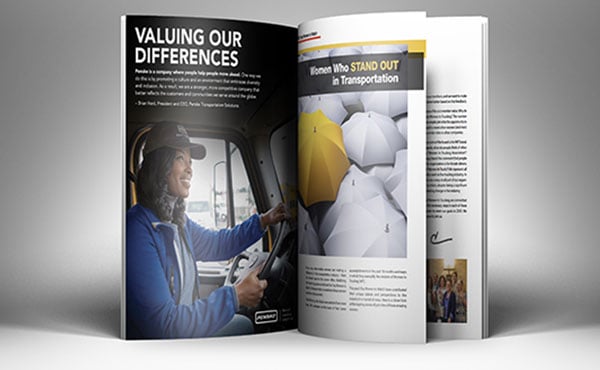A New Safety Mindset Marks the Road Ahead
by Women In Trucking Staff, on Apr 10, 2024 9:30:18 AM

 Safety is a key component to a successful retention strategy during today’s driver shortage, according to Marcia Faschingbauer, President and CEO of Excargo Services, a logistics company that provides intermodal, drayage, transloading and warehousing solutions to major importers and exporters. “Our drivers are hanging with us because of our culture, because they know we’ll fight for them and that we provide the best environment—and safest environment—that they can find,” she says.
Safety is a key component to a successful retention strategy during today’s driver shortage, according to Marcia Faschingbauer, President and CEO of Excargo Services, a logistics company that provides intermodal, drayage, transloading and warehousing solutions to major importers and exporters. “Our drivers are hanging with us because of our culture, because they know we’ll fight for them and that we provide the best environment—and safest environment—that they can find,” she says.
 Northland Insurance Company looks at carriers’ introductory safety program for drivers, ongoing safety messages and corrective action training in evaluating safety risks, according to Bob Bringgold, Director of Transportation Risk Control.
Northland Insurance Company looks at carriers’ introductory safety program for drivers, ongoing safety messages and corrective action training in evaluating safety risks, according to Bob Bringgold, Director of Transportation Risk Control.
“Organizations without robust safety programs pay a lot more.” he says. Faschingbauer and Bringgold agree safety messages to drivers need to be consistent, constantly reinforced and presented in a variety of ways—from video and printed materials to in-person discussions.
National Carriers, a motor carrier providing refrigerated and logistics services in the 48 contiguous states, coaches drivers in the moment through a dash cam program, according to Jill Maschmeier, Director of Safety & Compliance. She says it automatically tells drivers when they’re too close to vehicles or when they need to slow down.
“Video is a perfect tool for providing feedback after incidents like harsh braking events,” Bringgold says. He adds that AI now is being used by carriers to comb through video to find coachable moments.
Predictive maintenance technology also is helping to improve safety, Faschingbauer says: “Anything that makes the driver stop and get on the side of the road is a safety hazard.” Digital keys are another technology that supports driver safety by limiting exposure. Abby Szafranski, Director and Head of Product Management at cybersecurity company Irdeto explains that the ability to use mobile phones to control locks enables drivers to enter and exit vehicles quickly on roadsides, in busy parking lots or other potentially vulnerable situations.
Digital keys are another technology that supports driver safety by limiting exposure. Abby Szafranski, Director and Head of Product Management at cybersecurity company Irdeto explains that the ability to use mobile phones to control locks enables drivers to enter and exit vehicles quickly on roadsides, in busy parking lots or other potentially vulnerable situations.
Efforts to create safer conditions have expanded to the technology of roads themselves. A freight signal optimization project administered by the North Central Texas Council of Governments (NCTCOG) adjusts traffic signals for truckers. According to Morgan Tavallaee, Transportation Planner at NCTCOG, the system gives truck drivers more time to get through a stoplight, so they don’t have to brake quickly or run a red light.
Carriers are expanding the scope of their safety focus as well. Excargo and National both actively reach out to drivers of passenger cars involved in accidents with their drivers to offer support. Coupled with driver-centric programs that include offering concerted care to drivers involved in crashes, Faschingbauer says Excargo is creating a safety culture with measurable benefits.
Faschingbauer sees the results in the KPIs that she values, including excellent driver retention rates and safety numbers with the FMCSA that she says continue to improve.

A version of this article will be featured in Edition 1 of 2024 in our official magazine, Redefining The Road. Download the latest edition here.
Like this kind of content?
As a member of the Women In Trucking Association, stay on top of emerging trends and business issues impacting transportation and logistics; learn the importance of gender diversity in the workplace and the need for more women drivers; and see best practices in encouraging the employment of women in the trucking industry. Join today! Learn More






